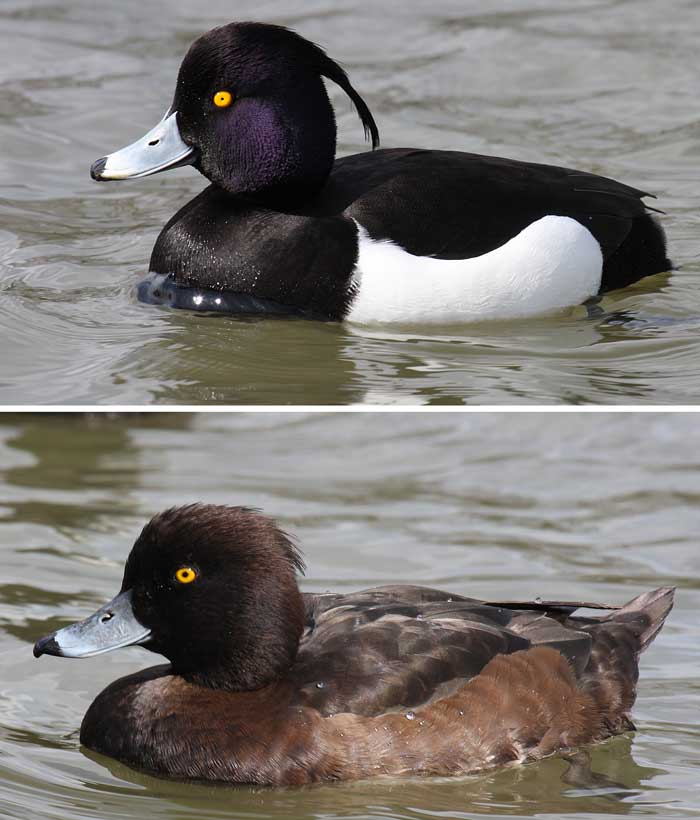
Aythya fuligula (*)
Superregnum: Eukaryota
Cladus: Unikonta
Cladus: Opisthokonta
Cladus: Holozoa
Regnum: Animalia
Subregnum: Eumetazoa
Cladus: Bilateria
Cladus: Nephrozoa
Superphylum: Deuterostomia
Phylum: Chordata
Subphylum: Vertebrata
Infraphylum: Gnathostomata
Megaclassis: Osteichthyes
Cladus: Sarcopterygii
Cladus: Rhipidistia
Cladus: Tetrapodomorpha
Cladus: Eotetrapodiformes
Cladus: Elpistostegalia
Superclassis: Tetrapoda
Cladus: Reptiliomorpha
Cladus: Amniota
Classis: Reptilia
Cladus: Eureptilia
Cladus: Romeriida
Subclassis: Diapsida
Cladus: Sauria
Infraclassis: Archosauromorpha
Cladus: Crurotarsi
Divisio: Archosauria
Cladus: Avemetatarsalia
Cladus: Ornithodira
Subtaxon: Dinosauromorpha
Cladus: Dinosauriformes
Cladus: Dracohors
Cladus: Dinosauria
Ordo: Saurischia
Cladus: Eusaurischia
Subordo: Theropoda
Cladus: Neotheropoda
Cladus: Averostra
Cladus: Tetanurae
Cladus: Avetheropoda
Cladus: Coelurosauria
Cladus: Tyrannoraptora
Cladus: Maniraptoromorpha
Cladus: Maniraptoriformes
Cladus: Maniraptora
Cladus: Pennaraptora
Cladus: Paraves
Cladus: Eumaniraptora
Cladus: Avialae
Infraclassis: Aves
Cladus: Euavialae
Cladus: Avebrevicauda
Cladus: Pygostylia
Cladus: Ornithothoraces
Cladus: Ornithuromorpha
Cladus: Carinatae
Parvclassis: Neornithes
Cohors: Neognathae
Cladus: Pangalloanserae
Cladus: Galloanseres
Ordo: Anseriformes
Familia: Anatidae
Subfamilia: Anatinae
Genus: Aythya
Species: Aythya fuligula
Name
Aythya fuligula (Linnaeus, 1758)
Synonyms
Anas fuligula (protonym)
References
Linnaeus, C. 1758. Systema Naturae per regna tria naturae, secundum classes, ordines, genera, species, cum characteribus, differentiis, synonymis, locis. Editio Decima, Reformata. Tomus I. Holmiæ (Stockholm): impensis direct. Laurentii Salvii. 824 pp. DOI: 10.5962/bhl.title.542 BHL p. 128 BHL Reference page.
Vernacular names
Afrikaans: Kuifeend
العربية: زرقاي
asturianu: Coríu Calón de Moñin
azərbaycanca: Kəkilli qaraördək
башҡортса: Ала өйрәк
беларуская: Чубаты нырок
български: Качулата потапница
বাংলা: কালো হাঁস
brezhoneg: Morilhon kabellek
català: Morell de plomall
čeština: Polák chocholačka
чӑвашла: Тĕпеклĕ улача
Cymraeg: Hwyaden Gopog
dansk: Troldand
Deutsch: Reiherente
Ελληνικά: Μαυροκέφαλη Πάπια, Τσικνόπαπια
English: Tufted Duck
Esperanto: Tufanaso
español: Porrón moñudo
eesti: Tuttvart
euskara: Murgilari mottodun
فارسی: اردک سیاه کاکل
suomi: Tukkasotka
føroyskt: Trøllont
Nordfriisk: Toopet an
français: Fuligule morillon
Frysk: Tûfein
Gaeilge: Lacha Bhadánach
Gàidhlig: Lach thopach
galego: Parrulo cristado común
ગુજરાતી: કલવેતીયો
Gaelg: Thunnag happag
עברית: צולל מצויץ
hrvatski: Krunasta patka
magyar: Kontyos réce
հայերեն: Սուզաբադ փուփուլավոր
Bahasa Indonesia: Kambangan hitam
íslenska: Skúfönd
italiano: Moretta
日本語: キンクロハジロ
ქართული: ქოჩორა შავულა იხვი, ქოჩორა ყვინთია
қазақша: Айдарлы сүњгуір
한국어: 댕기흰죽지
коми: Тугъя турунчӧж
lietuvių: Kuoduotoji antis
latviešu: Cekulpīle
македонски: Цуцулеста патка
монгол: Гэзэгт шумбуур
Bahasa Melayu: Itik Berjambul
Malti: Brajmla tat-Toppu
नेपाली: कालीजुरे हाँस
Nederlands: Kuifeend
norsk nynorsk: Toppand
norsk: Toppand
ଓଡ଼ିଆ: ଜଟିଆ ଗେଣ୍ଡି
polski: Czernica
پنجابی: رن ہارو بطخ
português: Zarro-negrinha
rumantsch: Anda mora
română: Rață moțată
русский: Хохлатая чернеть
саха тыла: Ханай
davvisámegiella: Vuoktafiehta
srpskohrvatski / српскохрватски: Krunasta patka - Крунаста патка
slovenčina: Chochlačka vrkočatá
slovenščina: Copasta crnica
shqip: Rosa laramane me çafkë
српски / srpski: Ћубаста патка (Ćubasta patka)
svenska: Vigg
Kiswahili: Bata Kishungi
தமிழ்: Kurung Kaliyan
ไทย: เป็ดเปีย
Türkçe: Tepeli patka
українська: Чернь чубата
vèneto: Ànara dal ciufo
Tiếng Việt: Vịt búi lông
中文: 凤头潜鸭
The tufted duck or tufted pochard (Aythya fuligula) is a small diving duck with a population of close to one million birds, found in northern Eurasia. The scientific name is derived from Ancient Greek aithuia, an unidentified seabird mentioned by authors including Hesychius and Aristotle, and Latin fuligo "soot" and gula "throat".[2]
Description
The adult male is all black except for white flanks and a blue-grey bill with gold-yellow eyes, along with a thin crest on the back of its head. It has an obvious head tuft that gives the species its name. The adult female is brown with paler flanks, and is more easily confused with other diving ducks. In particular, some have white around the bill base which resembles the scaup species, although the white is never as extensive as in those ducks. The females' call is a harsh, growling "karr", mostly given in flight. The males are mostly silent but they make whistles during courtship based on a simple "wit-oo".
The only ducks which are similar are the greater scaup and lesser scaup, but these species have no tuft and a different call.
The tufted duck is one of the species to which the Agreement on the Conservation of African-Eurasian Migratory Waterbirds (AEWA) applies.
Refer to the following table for measurements of the tufted duck:[3]
Tufted duck measurements
| Measurement | Male | Female |
|---|---|---|
| Range of mass | 753-1026.2 g | 629-906.8 g |
| Average of mass | 889.6 g | 768.3 g |
| Range of length | 40.6-45.7 cm | 40.6-45.7 cm |
| Average of length | 43.2 cm | 43.2 cm |
| Range of wingspan | 20.2-21.2 cm | 19.4-20.7 cm |
Distribution
The tufted duck breeds throughout temperate and northern Eurasia. It occasionally can be found as a winter visitor along both coasts of the United States and Canada. It is believed to have expanded its traditional range with the increased availability of open water due to gravel extraction, and the spread of freshwater mussels, a favourite food. These ducks are migratory in most of their range, and overwinter in the milder south and west of Europe, southern Asia and all year in the British Isles. One individual has been reported as far south as Melbourne, Australia. They form large flocks on open water in winter.
Habitat
Their breeding habitat is close to marshes and lakes with plenty of vegetation to conceal the nest. They are also found on coastal lagoons, shorelines and sheltered ponds.
Food
These birds feed mainly by diving, but they will sometimes upend from the surface.[4] They eat molluscs, aquatic insects and some plants and sometimes feed at night.
Gallery
References
BirdLife International (2016). "Aythya fuligula". IUCN Red List of Threatened Species. 2016: e.T22680391A86013549. doi:10.2305/IUCN.UK.2016-3.RLTS.T22680391A86013549.en. Retrieved 12 November 2021.
Jobling, James A (2010). The Helm Dictionary of Scientific Bird Names. London: Christopher Helm. pp. 64, 165. ISBN 978-1-4081-2501-4.
Azzi, MayaV; Garrison, RyanJ. "Aythya fuligula (tufted duck)". Animal Diversity Web. Retrieved 2020-09-25.
Ogilvie, Malcolm A. (1986). "Tufted Duck". In Lack, Peter (ed.). The Atlas of Wintering Birds in Britain and Ireland. London, UK: T & AD Poyser. p. 110. ISBN 978-1-4081-3828-1. Retrieved 12 August 2014.
Retrieved from "http://en.wikipedia.org/"
All text is available under the terms of the GNU Free Documentation License

